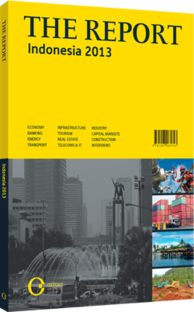Neither here nor there: Caught between old and new technologies, LTE may provide a way out
Stuck between 2G and 4G, a number of bridging technologies between 3G and 4G have been implemented and tested. However, due to a combination of bureaucratic hold-ups, planning errors and bad bets on technological dead ends, the development has not been smooth and seems to have hit a bit of a wall. Much of the world is in the same place, but getting the transition right is of utmost importance for Indonesia. Because of its unique geography, mobile services are vital to increasing connectivity and creating a true nationwide market. And because of the low revenues per user, data, real high-speed data, is vital for profitability.
STUMBLING BLOCKS: Like many countries, Indonesia opted to introduce a workaround solution allowing for 4G-like services. It started with WiMAX, an IEEE 802.16 standard that can deliver transfer speeds of 40 megabits per second (Mbps). WiMAX does not fit the full International Telecommunications Union (ITU) definition for 4G, but the ITU now accepts WiMAX as a 4G technology. Indonesia issued eight WiMAX licences in 2009 for 15 zones, but only two licence holders, First Media and Berca, are actually offering services as of late 2012. The former recently reported having just 7000 subscribers in Jakarta. The latter had subscribers in eight cities: Medan, Balikpapan, Batam, Denpasar, Makassar, Pekanbaru, Palembang and Pontianak.
The main problem has been bureaucratic. The WiMAX licences issued were 802.16d, or fixed WiMAX. It is a powerful technology with data transfer speeds of up to 75 Mbps and a range of 50 km. But it is more a substitute for hardwired broadband than a truly mobile technology. Mobile WiMAX, or 802.16e, is also powerful. It achieves data transfer speeds of up to 15 Mbps and has a range of 20-50 km. As of late 2011, the Ministry of Communications and Information Technology continued to support fixed WiMAX despite little interest.
According to local reports, industrial policy was to blame. In favouring 802.16d, the government was trying to promote a “national industry”. The country spent about $2m in support of 802.11d. But the industrial policy failed as there was a weak commercial case for offering the service. Officials finally relented in 2011 and began to accept the deployment of mobile WiMAX, but by that time it was too late. The WiMAX market was all but dead, because of earlier limitations placed upon its deployment, and other technologies had emerged in the meantime that began to challenge WiMAX.
NEW OPTION: Long-term evolution (LTE) is now the 3.9G option that makes the most sense, but it is having trouble gaining momentum in Indonesia. It has been in use in some countries since 2009 and has been adopted by the US, Sweden, Singapore, the Philippines, Japan, Korea and others. Like WiMAX, it does not meet 4G standards but is accepted by the ITU as 4G. Peak download speeds of 200 Mbps are possible, and upload rates can hit 75 Mbps. As of late 2012, trials had been conducted and at least one licence had been issued, to Indosat. Despite the technology’s promise, LTE has not caught on in Indonesia.
Again, bureaucratic problems persist. In 2011 Tifatul Sembiring, the minister of communication and information technology, said Indonesia would push WiMAX over LTE despite the decline of the standard locally and internationally. But the biggest issue appears to be that of available spectrum. The band assigned to LTE, 2.3G Hz, is currently occupied by WiMAX. The relatively dead technology is blocking implementation.
REFARMING: Spectrum is becoming a major headache for the country. The operators are running out of 3G capacity and, due to the delay of the latest auction, are starting to hit capacity limits. GSM operator Telkomsel has been eying the 700-MHz frequency for 3G because it allows for a 5-km broadcast range, but that frequency is currently occupied by television broadcasts. Indosat has tested LTE at 1800 MHz, but that is currently being utilised by 2G and could be assigned to 3G. Indeed, the country faces a bit of a spectrum crisis, one so severe that a complete overhaul may have to be done at the highest levels, and this major “refarming” of bands will delay 4G until about 2014.
You have reached the limit of premium articles you can view for free.
Choose from the options below to purchase print or digital editions of our Reports. You can also purchase a website subscription giving you unlimited access to all of our Reports online for 12 months.
If you have already purchased this Report or have a website subscription, please login to continue.

